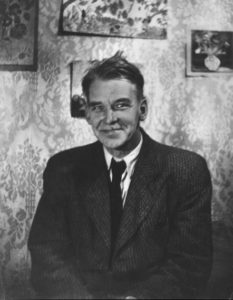
1894 - 1968
Sergei Romanovich

description
A Russian and Soviet artist, a teacher and a memoirist. He worked in such styles as Post-Impressionism and Rayonism. He worked in the genres of easel and monumental painting, as well as a graphic and book illustrator.
Was born into the family of an inspector supervising homes for the orphans named after Empress Maria Fyodorovna. The mother of the future artist, Sophia Nensberg, a Swedish woman, was fond of drawing and became the first teacher of her son, though sometimes the drawings of her son outraged her.
Romanovich was an active participant and even a “builder” of such groups as “Rayonists and Futurists”, “Makovets”, “Four Arts”. The artist worked much as a teacher of drawing and painting in Voronezh and in Moscow. Talented essayist Romanovich wrote essays and sketches about famous artists-compatriots, such as N. Ge, M. Larionov, P. Bromirsky, P. Mituriche, as well as P. Picasso and Van Gogh.
Paintings of the artist decorate theaters, pavilions, industrial buildings of major cities of the USSR. The artist’s paintings are in the main museums in Russia and in many regional museums and galleries of the country.
Key ideas:
Romanovich showed himself as an artist very early. For example, art critics attribute “The composition in the spirit of Chekrygin” to the 1910s. Being in the cohort of Mikhail Larionov from the age of 17, he worked hard on the technique. In the few known early works (such as “Recollection of Tiraspol”), you can see the work with color and form, a bold liberated brushstroke.
Later, the young artist turned to themes from classical literature, created picturesque paraphrases of the works of Rubens, Tintoretto, and Delacroix. They are marked by the desire for high professionalism and hard work on the tool of expression – the art form of works.
The artist immersed in the monumental painting that was in demand. This happened when the adherence to the traditions of world culture was called “smuggling”, then “artistic counter-revolution” (definitions taken from the article of magazine “Art to the masses”), and the creative groups, the member of which the artist was, became prohibited by censorship, accusing them of “narrowly formalistic” and “in fact, bourgeois tendencies”. A whole series of theaters and cinemas, pavilions and industrial premises received paintings created by Romanovich.
Feeling heavy ideological pressure, he found a way out for his easel painting in “Realism according to Romanovich”. This realism turned out to be close to medieval theology and antiquity in Renaissance painting. Another part of the heritage of the mature period is “Flowers” series. In both subjects, Romanovich followed his reflections that the fine arts are “radiant in nature” and that in any technique there is an opportunity to show all the strength, richness and the variety of color.
As a talented graphic, Romanovich was inspired by literature (Gogol, Lermontov, Goethe) and music (“Beethoven and Schubert in the Music Shop”, 1950s), the nature of the Crimea. In the last decade, the artist returned to “Rayonist” abstractions, demonstrating faith in the legitimacy of the existence of Rayonism as a branch of pointless painting and his devotion to the ideas of M. Larionov.
1894
1909
1911 - 1914
1918 - 1920
1921 - 1922
1923 - 1927
1928 - 1929
1932 - 1948
1950 - 1960
1968
The birth of the artist
Entered the fine art department of the Moscow School of Painting, Sculpture and Architecture
Entered the fine art department of the Moscow School of Painting, Sculpture and Architecture, where his teachers were N. Kasatkin, K. Korovin, A. Arkhipov and other prominent masters. Participated in six exhibitions from 1912 to 1918 (before graduation).
He enlisted in the army as a volunteer
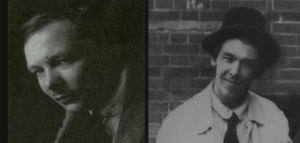
Received a diploma of Moscow School of Painting, Sculpture and Architecture
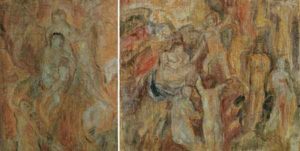
He became an active member of the association "Makovets"
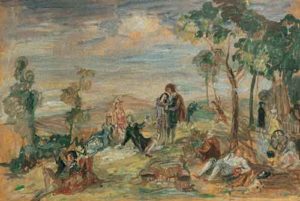
Got married; his son Paul was born
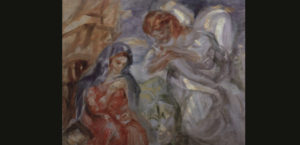
Joined the SMA
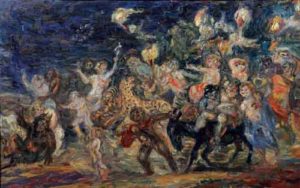
He married E. Boyko
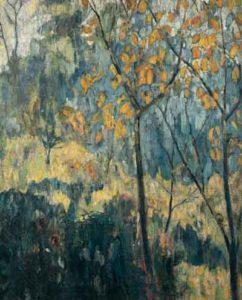
"Flowers"
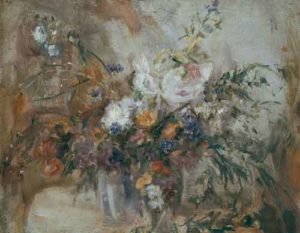
The death
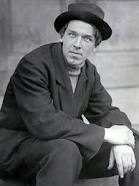
Sergei Romanovich
On Artist
flow
Impressionism
Post-impressionism
friends
Sophia Nensberg
artists
Nikolay Kasatkin
Abram Arkhipov
Konstantin Korovin
Paul Gauguin
Paul Cezanne
Vincent Van Gogh
Pablo Picasso
Eugene Delacroix
By Artist
flow
Abstractionism
friends
Mikhail Larionov
artists
Boris Bessarabov
Evgenia Romanovskaya
